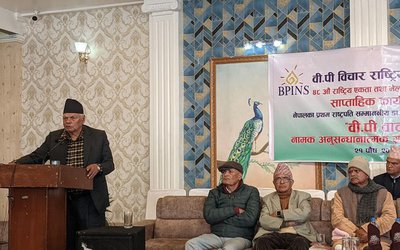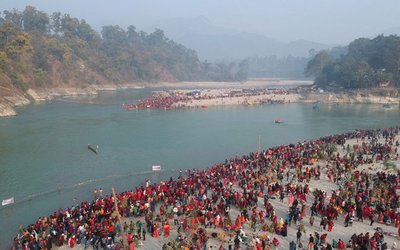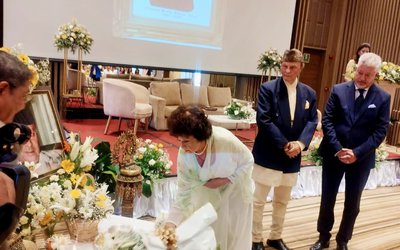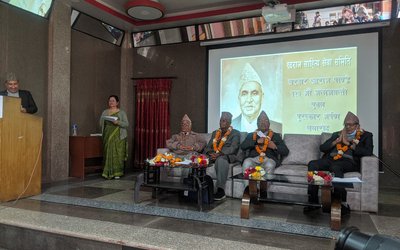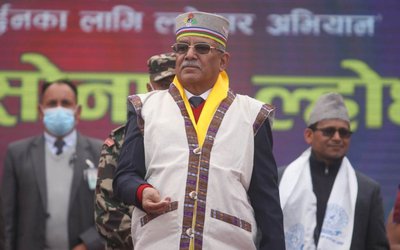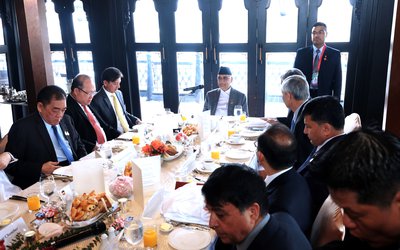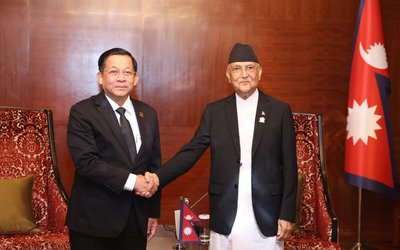
Sarat Chandra Das’s Journey to Lhasa and Central Tibet (New York: E.P. Dutton, 1902 ) is yet another important work that touches on Eastern Nepal. Das was a Bengali teacher born in Chittagong, now in Bangladesh, and stationed in Darjiling. He was used by the British to spy around Tibet, still a hidden land for the colonizers, and gather information on Russians and Chinese. The British thought that their [perceived] movement in Tibet and further expansion towards the south could potentially collide with and threaten their control of India.
In 1879, Das and Lama Ugyen-gyatso, one of his students, crossed into Tibet west of Kanchanjinga via eastern Nepal and the Tashilhunpo Monastery en route to Lhasa. Ugyen-gyatso was a Tibetan Lama from Sikhim. They started from Darjiling. Both of them spent six months in Tibet. They returned along the same route in 1881 bringing with them a large collection of Tibetan and Sanskrit texts. They visited Tibet again the same year later. The second visit gave them an extra opportunity to explore the Yarlung Valley. This is the place “where Tibetan civilization is said to have first made its appearance.” Subsequently, they returned to Darjeeling in January 1883.
There are a few references in the book about Eastern Nepal and the people of that land. Das writes about the Lepchas and Limbus catching fish, sometimes of considerable size, in the cold season in the pools in the river-bed, which the former sell in the Darjiling bazar. Nepalese settlers were numerous in the British part of the land as well. He found Limbu houses with sheepfolds and pigsties in front of them, including cattles such as goats and cows. The Limbu fowls, by the way, are not so large as those of the Bhutias. Some Brahmans and Chetris were also mentioned to be there. They lived chiefly by selling milk and butter. He mentions of several paddy fields made on terraces along the hillsides, where ploughs drawn by bullocks were used. His observation was: “Bhutias neither terrace the hillsides nor do they use ploughs, but keep to their time-honoured implements, hoes and clubs {in) of oak, by which they get but scanty returns. The Limbus till the ground for three consecutive years, and then leave it fallow for three, when the weeds are cut and burnt, and it is again put under cultivation.”
Das writes that the Nepali natives described the country between the Arun and Tambur as Limbudu. This is the land of the Limbu aboriginal people. They are also known as Tsang among Tibetans and Bhutias. This is so because they emigrated from the Tsang province of Tibet. These people who have carried the culture of beating drums have dwelt there from time immemorial. Some Limbus are also said to have migrated from Kashi in tlie Madhya Desh and the village of Khedab. As such three communities of Limbus namely Tsang, Kashi, and Phedah form the limbu community. They call themselves by the name of Yakthanga. Kirats live in Kirauta which has been described as the regions between Dudkosi and the Arun. The name Kirat is as old as that of the great Hindu deity Mahadeva. Das notes: “The Kirat of the north and the Limbu of the south were known to the ancients by the name of Kirata, on account of their living by hunting and carrying on trade with the natives of the plains in musk, yak-tails, shellac, cardamoms, etc., from the earliest Hindu periods.”
Writing about the Limbus. Das states: “The first branch from Tsang spread over Tambur-Khola, Phalung, Mirva Khola itself, Mayiwa, and Yangrub, being designated by the 'i'ibetans as Tsang Monpa, or the Limbus inhabiting the defiles. Those who came from Kashi occupied Chaibisa, Kaikhola, and Tsolkar. Those that sprang from underneath the great rock of Phedah were also called Baiphuta. The name of the place in the middle of which stands the huge slab of rock, measuring a hundred fathoms on either side, was Phedah Pangi-loma, which is evidently a corruption of the name Pheduh Pangi-lungpa, or "the pasture land in Pheduh." The Limbus known as Baiphuta were the most powerful and numerous. Limbus have five classes of priests in their community.
Mentioning about Srijanga, the author notes him as deified hero of the Limbus. “The cis-Himalayan Bhutias identify him with an incarnation of Padma Sambhava, and attribute to him the introduction of the art of writing by the invention of an alphabet. Tradition also attributes the introduction of this art to Marang Kaja, and its revival to Srijanga.”
Giving a background to the book, and relying on the understanding of John MacGregor, W. W. Rockhill, the editor of the book, explains why exploration of Tibet was important. In 18th and 19th centuries, the British were worried that the Russian Empire were leaping eastward and southward. They thought of this expansion as having potential to collide with and threaten British who were controlling India. As a consequence, “the British developed the idea of strategic pro-British ‘buffer’ of influence in the regions north of India that would keep Russian expansion well away from the subcontinent. To create such a buffer, the British sent diplomats, explorers, adventurers, and soldiers to Tibet, Afghanistan and other places in Central and Inner Asia. They tried to map the places they went, and convince, bribe, threaten, and otherwise bring the often brutal and fiercely independent local leaders they met to their side. The Russians, meanwhile, worked to undermine and counter these efforts and expand their own sphere of influence. This contest came to be known as the Great Game.”
Rockhill maintains in his introduction to the book that Tibet and the trans-Himalayan regions of eastern Turkestan assumed a special importance. In his opinion, it was there that edges of the British, Russian, and Chinese Empires all met, making for, as MacGregor writes, “a particularly complicated and explosive situation.” It was, therefore, all the more important that “these regions be explored and charted.” For the British, the exploration of Tibet had an added urgency because it was thought that Tibet could provide the Russians with an alternative means of reaching India that did not require going through the brutal Afghan terrain and down through the Khyber Pass.”
Going further, Rockhill argues: “It was also, however, at around this time that access to Tibet and the surrounding area began to close to foreigners. As the death of British explorer William Moorcroft had demonstrated, it was simply too dangerous for an Englishman to wander around Central Asia. Additionally, the Chinese also had political objections to any expansion of foreign influence into Tibet, making getting the necessary permissions and assistance from local authorities for a foreign explorer challenging. As a result, the British turned to native explorers – spies, really – who assumed identities as merchants and pilgrims wandering Tibet and took notes about the areas they went to, covertly measuring and recording geographic details, distances and even altitudes. These men came to be known as ‘pundits’. One of the most enterprising and successful was Sarat Chandra Das.”
The book has valuable references on Tibet. It also has information on the Nepalese traders in Tibet and their plight.

